Understanding Process Explorer
Introduction
Process Explorer, a free tool from Microsoft, is an extremely powerful task manager that should be running when performing dynamic analysis. It provides valuable insight into the processes currently running on a system, making it an essential tool for malware analysts and cybersecurity professionals.
Features of Process Explorer
Process Explorer offers a wide range of capabilities that make it superior to the standard Windows Task Manager. Some of its key features include:
1. Listing Active Processes
Process Explorer lists all active processes in a hierarchical tree structure, showing the parent-child relationships. This makes it easier to analyze process spawning behavior and detect anomalies.
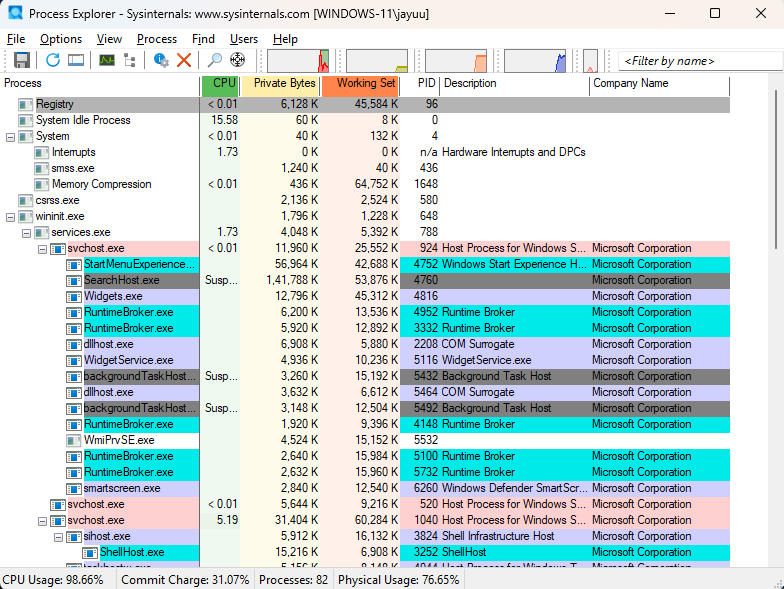
2. Monitoring Process Properties
Process Explorer allows users to view various properties of a process, such as:
-
Threads Tab: Displays all active threads.
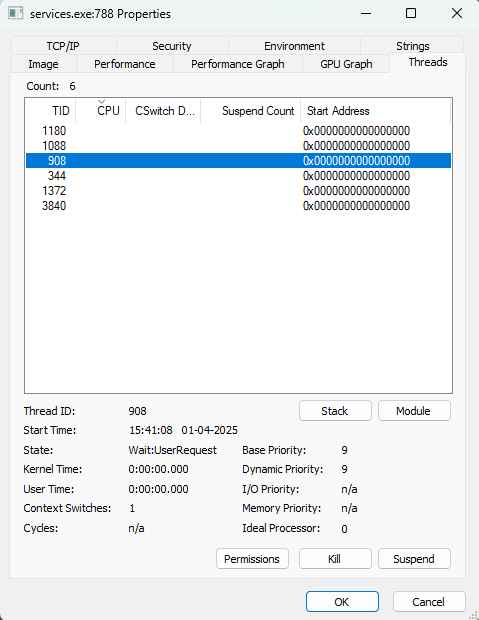
-
TCP/IP Tab: Shows active network connections and listening ports.
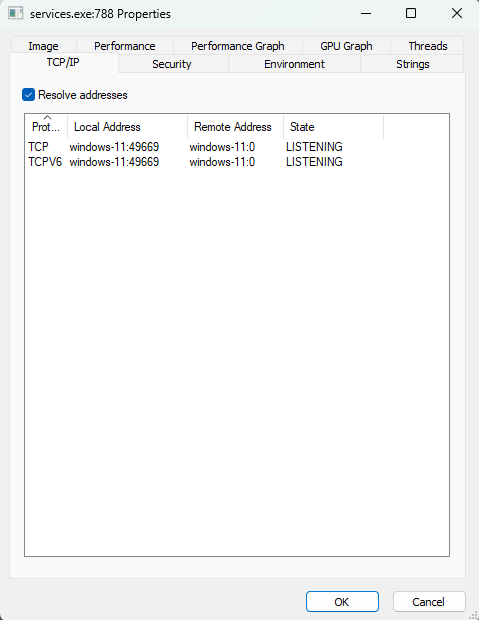
-
Image Tab: Displays the file path of the executable on disk.

3. Real-time System Monitoring

Process Explorer updates every second and highlights different process types with colors:
-
Pink: Services
-
Blue: Processes
-
Green: Newly started processes (temporary highlight)
-
Red: Terminated processes (temporary highlight)
5. Killing Processes and Managing User Sessions
Users can kill a process, log out users, and launch or validate processes directly from Process Explorer.

Verifying Process Authenticity
One of the most useful features of Process Explorer is the Verify option in the Image tab. This allows users to confirm if a binary is digitally signed by Microsoft. Since malware often replaces authentic Windows files with its own, verification helps ensure file integrity.
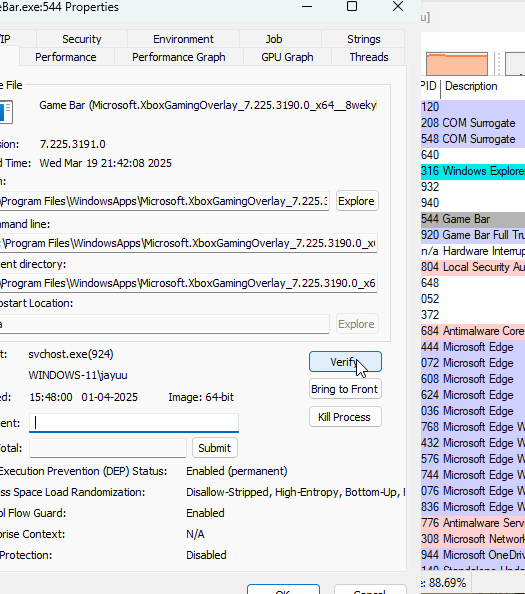
Process Replacement Detection
Some malware uses process replacement techniques, where a running process’s memory space is overwritten with a malicious executable. This can be detected using:
-
The Strings Tab: Compare strings in the disk executable against those in memory. If they differ significantly, process replacement may have occurred.
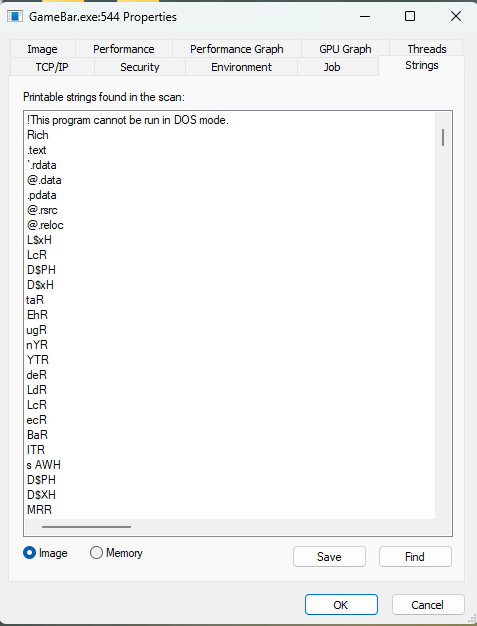
-
Memory vs. Disk Comparison: The in-memory image of a process should match its disk counterpart. Discrepancies can indicate malware.
Searching for Malicious DLLs
Process Explorer allows users to search for a specific handle or DLL using the Find Handle or DLL feature. This is particularly useful for tracking a malicious DLL loaded into memory by a running process.

Analyzing Malicious Documents
Process Explorer is also useful for analyzing malicious documents (e.g., PDFs, Word files). When opening a suspicious document, users can monitor for any unexpected processes launched. If a document spawns a new process, this could indicate malicious activity.
